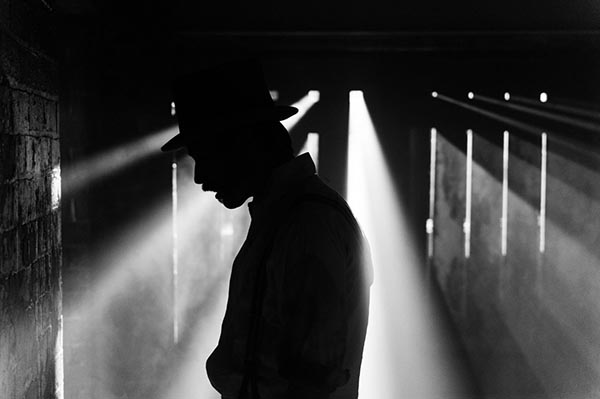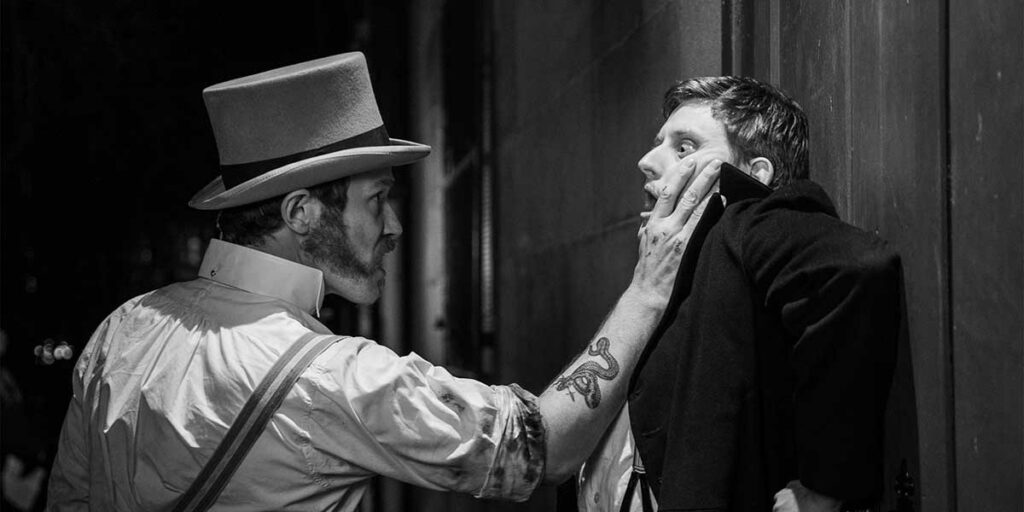The Strange Case of Dr Jekyll & Mr Hyde retells the classic novel through the lens of a dark, smoky Victorian Edinburgh.
Despite taking place in London, ‘The Strange Case of Dr Jekyll & Mr Hyde’ is a classic novel that’s always had a strong connection to Scotland thanks to author Robert Louis Stevenson’s upbringing in the country. Hope Dickson Leach’s new adaptation of the timeless story actually brings the intense mystery into the center of Edinburgh, using the city’s cultural and historical significance to twist the narrative and introduce new themes that play out really effectively. It’s this interpolation of Scottish history that makes Leach’s film stand out from the countless other interpretations that have been presented over the years, creating something that stands on its own and isn’t too bound by the exact details of the century-old story.
The story, much like Stevenson’s original narrative, follows a lawyer named Utterson (Lorn Macdonald) as he’s drawn into a mysterious conspiracy involving his old friend Henry Jekyll (Henry Pettigrew) and a notorious serial killer named Mr Hyde. However, where this version of the story differs is in its closer focus on themes of class disparity and social divisions, which Stephenson’s novel uses merely as subtext. This adaptation reverses the roles, using the story of Jekyll & Hyde as a framing device to support and emphasize the astute social commentary that lies underneath the surface of the plot. It’s in these moments that The Strange Case of Jekyll & Hyde really manages to justify its existence, even if the more central narrative often veers too deeply into a spirit of theatrics and melodrama that doesn’t fit with this story.
Besides the reinvented social commentary, the biggest selling point of Leach’s new adaptation is its crisp black-and-white cinematography and gritty production design which aims to recreate the dark, smoggy streets of Edinburgh in the 19th Century. Cinematographer David Liddell does an excellent job of recreating this specific era, using plenty of creative angular and lighting tricks to even pay homage to older, classic noir movies that used similar techniques. Alongside these beautiful visuals, The Strange Case of Dr. Jekyll & Mr Hyde also employs some creative editing choices and montage scenes that really establish that atmospheric style and keep the story moving at a fair pace.

However, the one element of this modern adaptation that simply doesn’t work as effectively as Leach clearly hoped is its tendency to veer into the theatrical, with the lead actors providing incredibly melodramatic and emotional performances in moments that are absolutely begging for some subtlety and restraint. As such, these characters just start to feel like caricatures of Stevenson’s interesting, complex protagonists that just aren’t as captivating. Macdonald’s take on Utterson in particular is really unexpected, transforming the character into somebody that’s fuelled by arrogance, blinded by pride and impossible to relate to. This makes it difficult to connect with the story on an emotional level, which is crucial for understanding its messages about humanity, morality, and duality.
Ultimately, The Strange Case of Dr. Jekyll & Mr. Hyde feels stuck between two extremes, left in an uncomfortable position in the middle. On the one hand, it’s clearly trying to be an authentic and familiar version of this story that follows the plot fairly closely and creates a similar visual style. But conversely, it’s also trying to be something new and refreshing that focuses on different aspects of the historical context. The result is something that’s unfortunately unsure of itself, but thankfully saved by a series of beautiful visual choices and real directorial talent.
The Strange Case Of Dr. Jekyll & Mr Hyde premiered at the 2023 Edinburgh Film Festival in August. Read our list of films to watch at the 2023 Edinburgh Film Festival!

